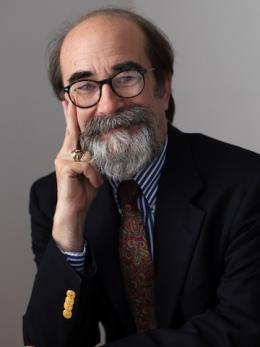by Mike Telin

On Sunday, February 12 at 4:00 pm at Church of the Saviour in Cleveland Heights, Plank will lead The Cleveland Consort of Voices — Sandra Simon and Emily Stauch (sopranos), Elizabeth Frey and Madelyn Hasebein (altos), Brian Skoog and Joel Kincannon (tenors), and Luca Cantone and Brian Wacker (basses) — in a program that celebrates the joy of singing. The concert is free. Click here for details.
Plank said that in addition to being personally fond of all the music on the program, choosing the works allowed him to do a little experimenting.
“One of the things I’m playing around with is the idea of juxtaposition, and pairing in creative ways,” he said. “You have 17th-century texts in 19th- and early 20th-century settings. I’m pairing that beautiful Thomas Campion Weather Beaten Sail, an early 17th-century devotional text and tune, with a wonderfully elegiac, pre-Vaughn Williams setting by C.H.H. Parry. It’s the same with O santum convivum. Luigi Mafino only died in 2012, but it’s an unbelievably Romantic piece. And Kim Arensen is a modern Norwegian composer who writes in a tonal framework but with an enhanced chordal content.”
Plank noted that while Lucas Pearsall was a 19th-century madrigalist, the text to his Lay a Garland is from the 1619 Beaumont & Fletcher play The Maid’s Tragedy.
“I like the idea that what we put next to each other — the context of neighbors — affects the way we hear things. So to hear Campion and Parry together is different from hearing Parry alone.”
The program sets themselves contain themes. “There’s one that deals with bereavement and consolation and one with the mystery of the Eucharist. And there’s a Marian set and one with themes about the joy of singing.”
Plank said that all of the new pieces have a clustery, chordal content, with broad melodies. “Arensen, Paul Melor, and Ed Rex would all get along very happily together at lunch.”
In addition to being a composer, Ed Rex is the VP of Product at Harmonai, the music & audio division of Stability AI. So how do we know that he actually wrote the piece and not one of his AI creations? “He’s the founder of Jukedeck and I listened to some of that and what I heard doesn’t sound anything like this,” Plank said. “He was a chorister at King’s, and Do Not Stand at My Grave and Weep has a very identifiable English ethos.”
The program’s opening set honors the 400th anniversary of the death of William Byrd and concludes with J.S. Bach’s motet Singet dem Herrn. “What I like best about the program pointing to the Bach is that the piece celebrates the joy of singing. And it is tailor-fit to the ensemble — it’s in eight voices, we are eight voices. The complicated thing with choral programs is that it’s easy to get into the succession of five-minute pieces. You want to have something that is the equivalent of orchestral symphonies. So this is a big-plate item served with smaller plates around it.”
When asked to describe the difficulties of singing one-on-a-part, Plank quickly said that endurance is a factor. “There’s no place to take a quick break — you’re always on. And blend can be a challenge. You are hearing individual sounds, but the upside is that you can get some wonderfully interesting colors from the ensemble. The challenge is to make sure the color is well-blended.”
Another virtue of singing one-on-a-part is the clarity of line. “If you think about the Bach — with those huge virtuosic fugues — when you hear an individual sing it, you can sense the excitement of a soloist rising and pushing themselves in a way that you don’t necessarily get in choral versions. The tuning can be more subtle and the expression can have a bit more give. And like I said, you can play with color in a different way. And one-on-a-part is just really fun.”
Although Plank has since left St. Paul’s and the ensemble’s membership has slightly changed, Plank is pleased with all that The Cleveland Consort of Voices has achieved. “We did a concert last spring for the Music From The Western Reserve series in Hudson. And this past fall we performed at St. James in Lakewood, so this Sunday will be our third outing. What’s nice is that all of the concerts have taken place in such beautiful venues, and it’s been special for us to be able to enjoy the sounds in such visually gratifying settings. I think the audience enjoys that too.”
Winding down our conversation Plank once again praised the members of the ensemble. “I’m the president of their fan club. They are just wonderful singers and people. It’s an enormous privilege and delight to be in their company. And to get to do these pieces that we all love is very special.”
Published on ClevelandClassical.com February 8, 2023.
Click here for a printable copy of this article



